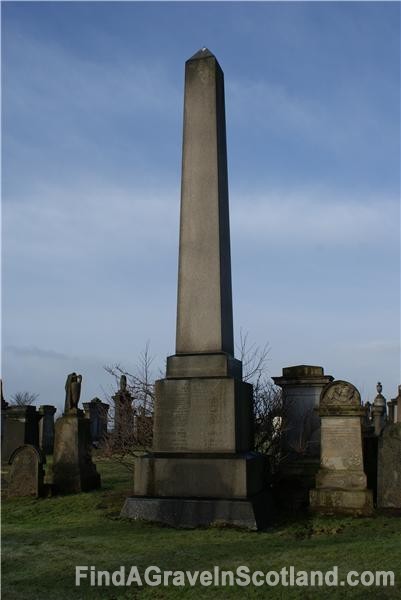Member Login
Free Search
Enter First Name, Last Name or Full Name and click Search,or click on the Advanced Search link for more options
Famous Scots - James Moir
[1988:] The most sustained and serious threat to the Green in the 19th century was the proposal, resurrected every now and then, to mine coal there. Cleland [the City Superintendent of Works] had had extensive borings done in 1821-1822 and he [...] estimated that there were one million, five hundred thousand tons of coal under Glasgow Green [...]. Glasgow Town Council, ever cautious, did not take up Cleland's suggestions regarding the coal. Why he should have pursued the matter so vigorously after having had the responsibility of upgrading the Green, is a mystery. Nevertheless, the need to realise the revenue came in 1858 when the town council found itself having to finance the purchase of the land for the West End and South Side Parks and the McLellan Gallery property. It was believed that the debt incurred could be wiped out by leasing the Green for mining.
The plan was presented by John McDowall, who owned the Milton Iron Works in North Woodside Road, and approved by a majority of the Council. While it was recognised that mining would result in subsidence - the ground would drop one foot for every two feet mined - "in a city such as Glasgow deposits to fill it up would be very readily obtained". In other words, Glasgow Green was to be turned into a public rubbish tip for a generation in order to pay for parks in the richer parts of the city. The citizens of the east end were outraged by this rank injustice. Opposition to the plans was led by an east-end councillor, Bailie James Moir. His family had a history of radicalism [...]. By the 1850s Moir was a prosperous tea merchant (known as "the Gallowgate Slasher" because of his low prices) with a seat on the Town Council [...]
To drive the message home, Poet's Box printed another sheet [...]: "Glasgow Green, with her beautiful walks, her refreshing springs, her traditional sights, her splendid views, her grandeur and majestic worth, is she to be broken up, annihilated and swept from the face of the earth forever? No! It cannot be. Surely they will not deprive the Citizens of Glasgow of the Green, which, for centuries, has proved so much benefit to them as a place of resort for pleasure; where youth can freely gambol, sport and play: where age can slowly bend their peaceful steps and breathe the fresh air of heaven. When our humble artisan, after a day's incarceration in the foul and poisonous air of the city, finishes his daily toil and bethinks himself for a stroll, where can he go but to the Green? If it were but for this alone the Green should stand unmolested, for were it not for the working man, there would be no West End Park. ... Taking all the benefits of this noble place into consideration, we think it highly improbable that the authorities of Glasgow will touch it, save for its improvement and cultivation."
The matter of mining coal was dropped, but raised again in 1869 and 1888
Headstone Photograph

Further Information
Firstname: JAMES
LastName: MOIR
Date of Death: 1st Dec 1880
Age at Death: 74
Cemetery: Sighthill Cemetery
Region: Glasgow and Clyde Valley
Country: Scotland
Please Note, the marker on this map indicates the Cemetery location, not the location of a particular grave.
<< Back



